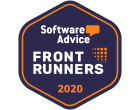Customer Experience Management (CEM or CXM) refers to the processes and systems that manages and enhances the interaction between the customer and the organization throughout the lifecycle of the customer on a continuous basis. Due to rise in a number of access channels (like web, mobile, social media, etc), the complexity of CEM processes and systems have increased significantly. CEM solution of the organization is expected to provide ROADS experience to the customer. ROADS stand for Real-time, On-demand, All-Online, DIY and Social.
CEM solution framework can consist of five areas namely Cx (Customer Experience) Strategy, Cx Insight, Cx Design, Cx Metrics & Measurement and Organization Adoption. This slide presentation explores the area of Cx Design.
Content inside presentation:
1. Customer Experience (Cx) Management – Cx Design
2. Challenges • Too many channels and touch points • Expectations varies based on customers
3. What is Cx Management (CEM)? Cx Management mainly deals about how to provide ROADS experience to Customers.
4. Infrastructure Needed for CEM iSMAC – IoT, Social, Mobility, Analytics and Cloud
5. CEM Framework Cx Strategy Cx Insight Cx Design Metrics & Measurement Organization Adoption
6. Cx Design Customer Journey Design Omni Channel Customer Journey Design Touch Point Design Personalization Design Customer Segmentation Design Content Personalization Design Presentation Personalization Design
8. Omni Channel Customer Journey Design 1. Identification of Cx Life Cycle Model 2. Categorization of Customer Journeys 3. Touch Points Identification 4. Cx Life Cycle and Touch Points Mapping 5. New Channel Design 6. Existing Channel Re-design 7. Preferred Journey Design 8. Alternate Journey Design 9. Return Journey Design 10. Personalized Journey Design 11. Channel Handover Design 12. Data consistency design (across channels, devices and touch points) 13. Presentation Consistency Design
9. Identification of Cx Life Cycle Model
10. Cx Life Cycle & Touch Point Mapping
11. Touch Point Design 1. Touch point interface experience design a) Easy accessibility of the applications and touch points b) Customer touch point expectation c) Reduce number of clicks in the application 2. Touch point capability design a) Consider DIY capability b) Bulk transaction c) Data query 3. Touch point performance design a) Reduce waiting period to get into touch point b) Consider touch point response time c) Design based on interaction timing d) Design based on the stakeholder performance
12. Personalization Design (1/2) 1. Customer segmentation design a) Entity criteria segmentation b) Customer data segmentation (based on customer attribute, customer behaviour, emotion, value, profile) c) External criteria segmentation (based on Time & duration, Location, Environmental condition, Regulatory) 2. Content personalization design a) Formulate rules for segmenting content – based on customer segmentation b) Formulate rules for individualizing the content c) On demand content (Customer specific content, Customer specific dialog, Based on past transaction, Based on search history) d) Personalized content creation (Co-creating input, Customer blogs/communities, VOC input) e) Content Recommendations (Based on offers, Benefits, Cross sell / up sell information, Advertisements)
13. Personalization Design (2/2) Presentation personalization design a) Presentation layouts b) Presentation themes c) Content placement design i. Based on customer segmentation ii. Nudging iii. Channel capabilities d) Content presentation size and paging design.
– Karthikeyan Thangaswamy, Director Product Management, FieldEZ.



